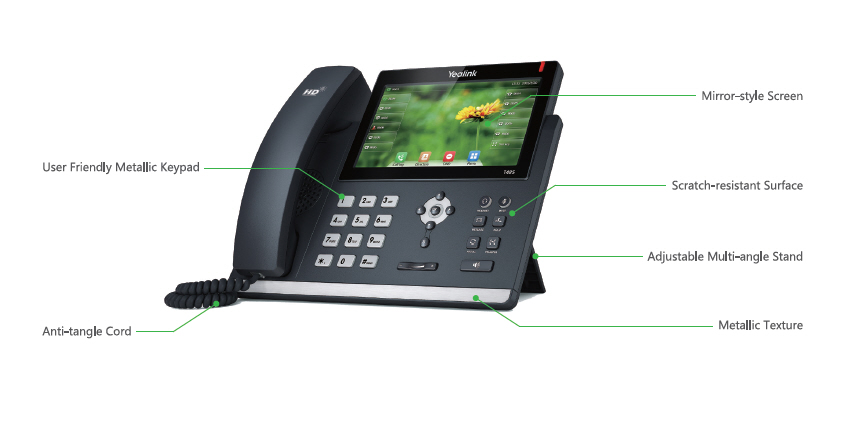Introduction: The Age of Virtual Connectivity
In today’s fast-paced digital world, remote collaboration has become more than just a trend; it’s a necessity. With the rise of global teams and flexible work environments, video calls have emerged as a crucial component of business interactions. However, the efficacy of these video calls largely hinges on their quality. Evaluating video call quality and its impact on remote collaboration is paramount for organizations aiming to enhance communication, boost productivity, and foster relationships among team members across different locations.
The Importance of Video Call Quality in Business Communication
Why is Video Call Quality Vital?
Video calls serve as the modern-day conference room, allowing teams to connect regardless of geographical barriers. Poor video quality can lead to misunderstandings, frustration, and diminished morale. In contrast, high-quality video calls facilitate clearer communication and stronger collaboration. The importance of investing in robust business phone systems that support high-definition video calling cannot be overstated.
Understanding Video Call Quality: What Does It Entail?
What Factors Influence Video Call Quality?
Several factors affect video call quality:
- Internet Bandwidth: A stable internet connection with sufficient bandwidth is vital for smooth video transmission. Network Latency: High latency can cause delays in communication, leading to awkward pauses. Hardware Quality: The quality of cameras and microphones plays a significant role in how participants perceive each other. Software Performance: The platform used for video conferencing must be reliable and optimized for performance.
In essence, evaluating these elements is critical for Business Phone Service ensuring effective remote collaboration.
Evaluating Video Call Quality: Key Metrics to Consider
1. Resolution: The Clarity Factor
When discussing video call quality, resolution is often the first metric that comes to mind. Higher resolutions—such as 1080p or 4K—offer crystal-clear visuals that enhance the overall experience. But why does this matter?
- Enhanced Interaction: Clear visuals help participants read body language and facial expressions better. Professionalism: High-resolution calls reflect professionalism and attention to detail.
2. Frame Rate: Smoothness Matters
Frame rate refers to the number of frames displayed per second during a video call. A higher frame rate results in smoother motion. For example:
- 30 FPS (Frames Per Second): This is generally acceptable for most meetings but may not convey movement as fluidly. 60 FPS: Ideal for dynamic presentations or discussions where visual clarity matters greatly.
3. Audio Quality: The Unsung Hero
While visuals are important, audio quality often makes or breaks a meeting. Here’s why:
- Clarity in Communication: Poor audio can lead to misunderstandings; clear sound allows for effective dialogue. Background Noise Suppression: Advanced business phone systems often include features that minimize background noise, enhancing focus on the speaker.
4. Latency: Timing Is Everything
Latency refers to the delay between sending data and receiving it during a call. High latency leads to noticeable delays which can disrupt conversations significantly:
- Acceptable Latency Levels: Ideally, latency should be below 150 milliseconds for an optimal experience.
5. Jitter: Consistency Over Time
Jitter measures variability in packet arrival times during transmission:
- Low jitter ensures consistent audio and video streams. High jitter can cause interruptions that detract from the meeting flow.
The Psychological Impact of Video Call Quality on Teams
How Does Poor Video Call Quality Affect Team Morale?
It’s no secret that poor-quality calls can leave participants feeling frustrated or disengaged:
- Participants might feel undervalued if technical issues persist. Frustration can lead to decreased productivity as team members struggle to communicate effectively.
Conversely, high-quality calls reinforce positive experiences that contribute to team cohesion and satisfaction.
Building Trust Through Clear Communication
When evaluating video call quality and its impact on remote collaboration, consider trust-building:
- Clear communication fosters transparency among team members. Enhanced visuals promote accountability; seeing teammates strengthens relationships even from afar.
Best Practices for Ensuring High-Quality Video Calls
1. Invest in Reliable Business Phone Systems
Investing in advanced business phone systems designed specifically for seamless communication is crucial. Look for features such as:
| Feature | Benefit | |-----------------|-----------------------------------| | HD Video | Improved visual clarity | | Noise Cancellation | Enhanced audio experience | | Multi-device Support | Flexibility across platforms |
2. Optimize Your Internet Connection
A stable internet connection is essential—consider these tips:
- Use Wired Connections: Whenever possible, opt for wired connections over Wi-Fi. Limit Bandwidth Usage: Ensure that unnecessary devices aren't hogging bandwidth during meetings.
3. Test Equipment Before Meetings
Never underestimate the importance of pre-meeting checks:
Test Cameras and Microphones: Make sure they’re functioning well.
Check Software Updates: Ensure your software is up-to-date to avoid compatibility issues during calls.
Evaluating Video Call Quality During Different Types of Meetings
1. Team Stand-Ups vs Client Meetings
Different types of meetings may require varying levels of video quality evaluation:
Team Stand-Ups
For quick daily check-ins:
- Aim for decent audio clarity; visuals can be secondary if time-constrained.
Client Meetings
High-stakes client meetings demand optimal conditions:

- Prioritize high resolution and low latency to create a professional impression.
Evaluating Video Call Quality through User Feedback
Gathering user feedback serves as an invaluable tool for improving future meetings:
Post-call Surveys: Ask participants about their experience regarding audio/video clarity.
Continuous Improvement: Use insights gathered from feedback loops to enhance future setups.
The Role of AI in Enhancing Video Call Quality
Artificial Intelligence (AI) has made significant strides in optimizing communications technology:

Smart Background Adjustments: AI-powered tools automatically adjust lighting and focus based on user activity.
Real-time Transcription Services: Enhance accessibility by providing transcripts during meetings.
Common Technical Issues During Video Calls
No matter how prepared you are, technical glitches can arise:
| Issue | Possible Solutions | |------------------|------------------------------------| | Lagging Videos | Check internet speed | | Echoing Sounds | Ensure all participants use headsets| | Disconnected Calls| Regularly update software |
Staying ahead by diagnosing potential problems will ensure smoother interactions.
The Future of Video Calling Technology
As technology evolves rapidly, so too will our methods of virtual interaction:
Virtual Reality (VR): Imagine immersive environments where teams could “meet” without being physically present!
Enhanced Augmented Reality (AR) Features: Expect content sharing capabilities integrated seamlessly within your virtual spaces.
FAQs About Evaluating Video Call Quality
Q1: What’s the ideal internet speed needed for high-quality video calls?
A1: Generally speaking, at least 3 Mbps upload/download speeds are recommended for standard definition; 10 Mbps or more is ideal for HD.
Q2: Can I improve my video call quality without upgrading my hardware?
A2: Yes! Optimizing your internet connection or reducing background applications can significantly enhance your current setup's performance.
Q3: How do I choose a suitable business phone system?
A3: Look for features like HD calling capabilities, ease-of-use interface options alongside integration with existing tools you currently use!
Q4: What common mistakes should I avoid during important client meetings?
A4: Avoid multitasking! Focus solely on the meeting at hand instead; distractions lead to miscommunication!
Q5: How frequently should I test my equipment before important calls?
A5: Regularly! Testing your equipment week-to-week ensures everything runs smoothly when required most!
Q6: Are there specific platforms known for better call quality? A6: Platforms like Zoom or Microsoft Teams often receive praise due their infrastructure supporting high-quality streaming services.
Conclusion
In conclusion, evaluating video call quality is not merely an operational necessity but rather an integral aspect influencing remote collaboration's success story in today's business landscape! From fostering trust among colleagues through crystal-clear communication channels down into selecting robust business phone systems equipped with top-notch features—the time invested into understanding this topic pays dividends manifold!
So next time you find yourself gearing up for another virtual meeting remember—quality truly matters! Elevate those connections today & witness firsthand how effective evaluations transform distant interactions into meaningful partnerships!